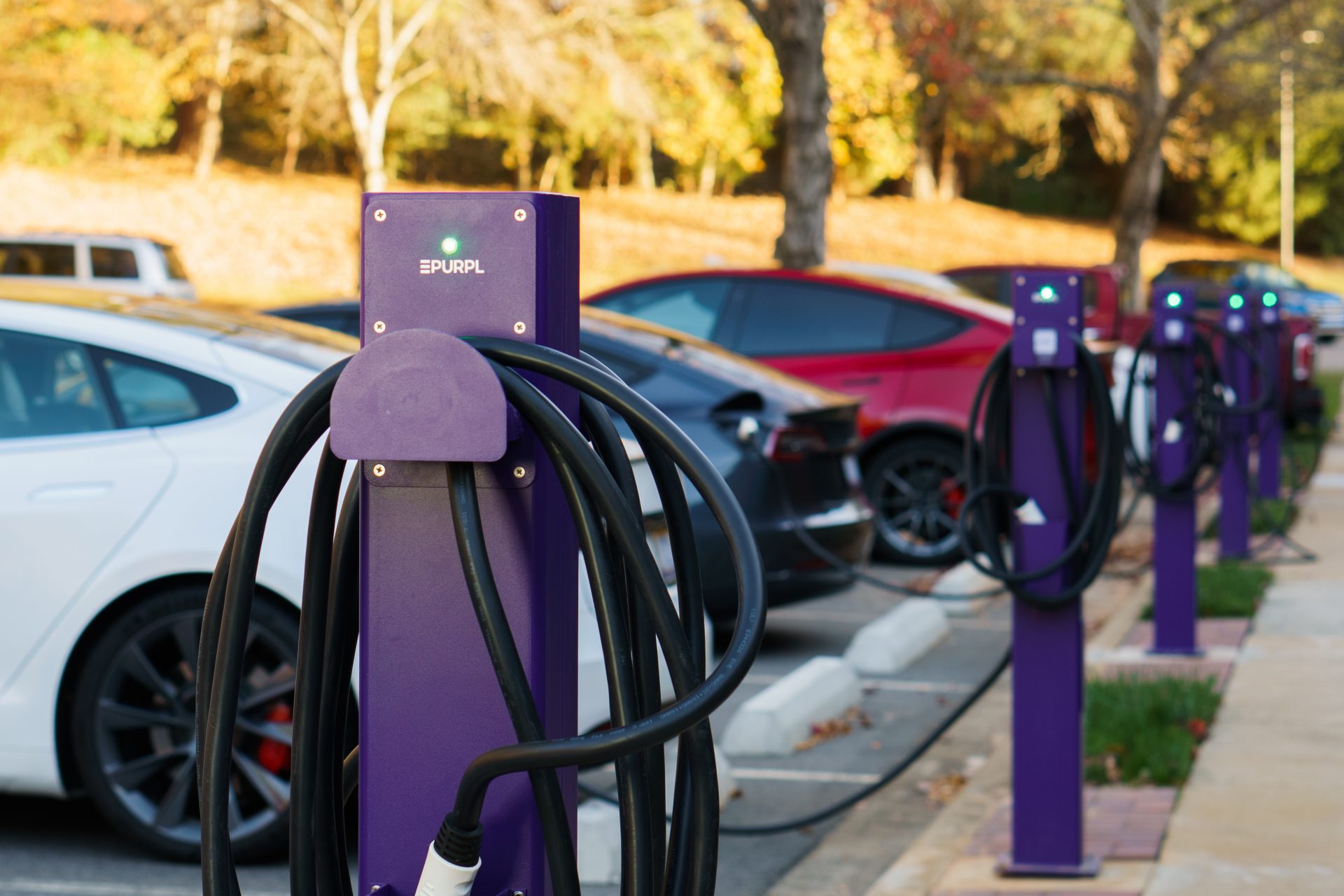

Multi-unit dwellings could avoid EV-charging sticker shock with peak-demand systemsMulti-unit dwellings could avoid EV-charging sticker shock with peak-demand systems
North Carolina-based Atom Power is launching a new EV charging station that could make managing electricity costs easier at apartments and condos.
The Atom Power Purpl charges directly from a circuit breaker, so no electronics are contained in the unit itself, the company explained last month in a press release. That also enables an energy management system that can sense changes in demand within seconds, rather than the 15 minute delay of other charging hardware, Atom Power claims.
Close monitoring of demand is important for avoiding demand charges, which are often levied by utilities when demand at a specific location exceeds its typical peak. Proper management of charging demand could mean the difference between charging an EV for $18 a month and $476 a month, Atom Power claims.
This could alleviate concerns of high charging costs at multi-unit dwellings, without resorting to expensive battery buffers.
Atom Power Purpl EV charging station
Just getting EV charging into apartment buildings and past homeowner associations can be enough of a battle—even without considering the cost of demand charges from many vehicles charging at once.
It’s worth noting that, right now, demand charges are mostly an issue for DC fast-charging stations, which can draw a lot of power even with a small number of cars charging. But AC Level 2 charging stations in a large building could potentially cause demand-charge issues, if enough cars are charging at once.
Ideally, regulatory changes would reduce or eliminate demand charges for EV charging. Demand charges were intended to address industrial energy use, and make sure that manufacturing plants and other high energy users pay for keeping available the peak energy they might need.
Massachusetts has passed a law calling on utilities to develop alternative rate structures for DC fast-charging stations that lessen the potential for demand charges. Will other states follow?
View original article at: “https://www.greencarreports.com//news/1134608_energy-multi-unit-dwellings-ev-charging-sticker-shock”
Add a comment Cancel reply
Related posts


Electric SUVs: Top 6 Models for Family Trips











